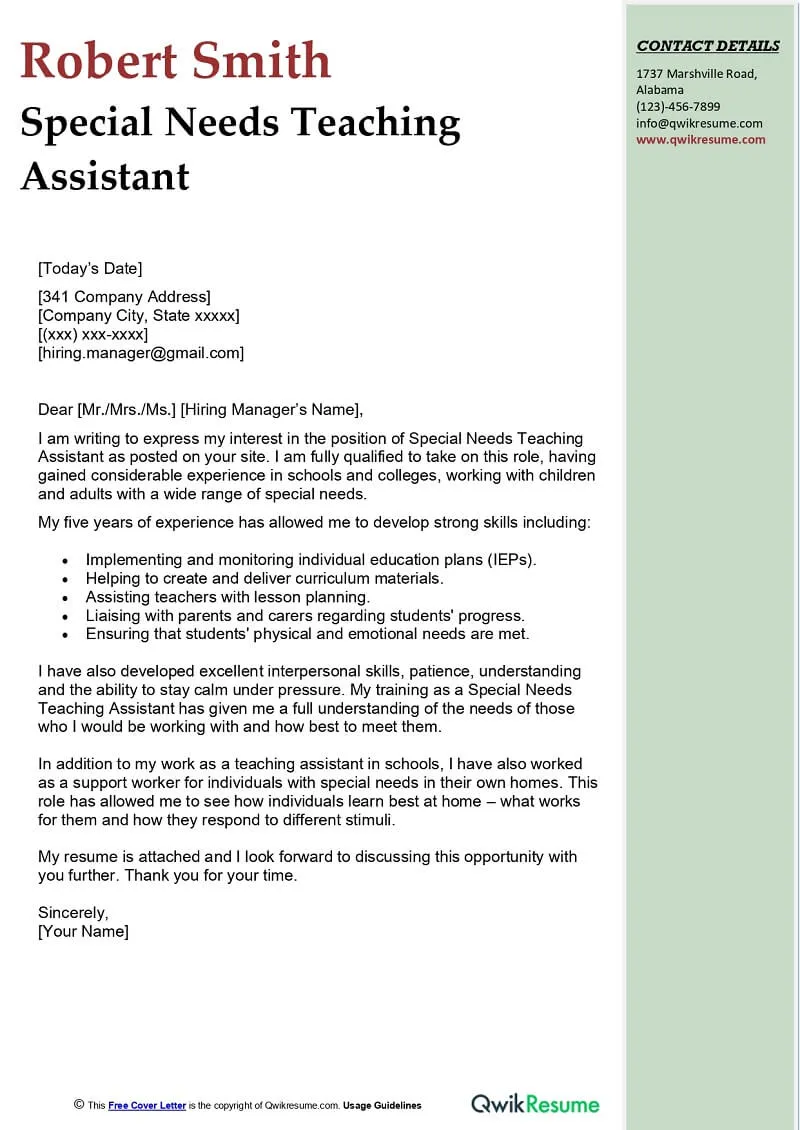Why You Need a Teacher’s Aide Cover Letter
A teacher’s aide cover letter is your initial introduction to a potential employer, serving as a crucial tool in securing a job interview. It goes beyond your resume, allowing you to showcase your personality, enthusiasm, and specific skills that directly align with the teacher’s aide role. Without a compelling cover letter, your application might get overlooked, as it’s your opportunity to provide context to your resume and highlight what makes you the perfect candidate. It is the chance to demonstrate your understanding of the school’s values and your commitment to supporting student success, giving you a competitive edge. A well-crafted cover letter can significantly increase your chances of landing an interview and ultimately, the job.
Understanding the Role of a Teacher’s Aide
Before crafting your cover letter, it’s vital to grasp the responsibilities of a teacher’s aide. These roles vary, but generally, they involve assisting teachers with classroom management, providing one-on-one or small group support to students, preparing learning materials, and maintaining a positive and organized learning environment. Different schools and grade levels will have varying needs, so research the specific requirements of the positions you are applying for. A solid understanding of these duties will allow you to tailor your cover letter to emphasize the skills and experiences most relevant to each job, demonstrating that you are a good fit for the role.
Key Responsibilities of a Teacher’s Aide
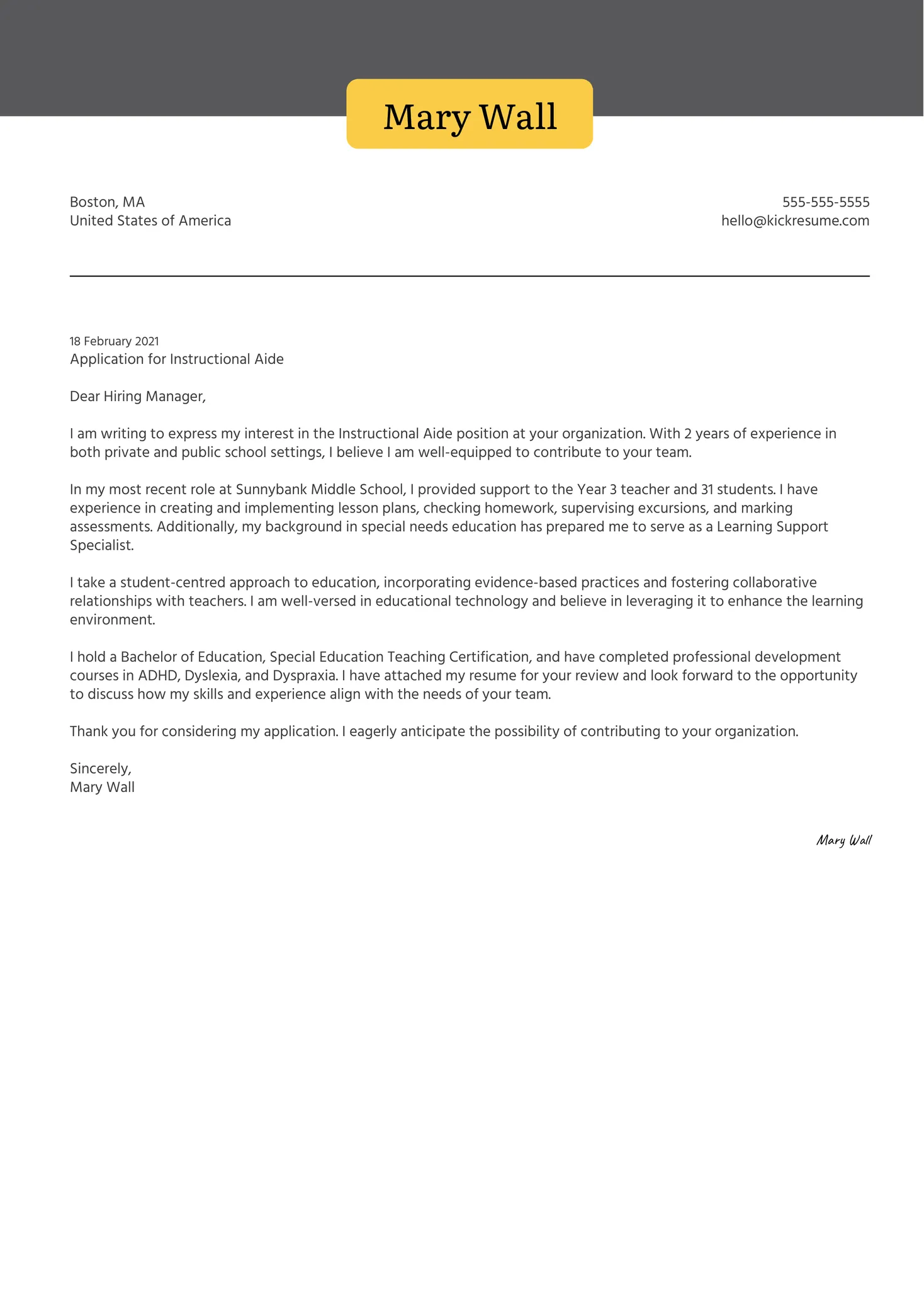
Teacher’s aides handle various tasks, contributing to a smooth and effective classroom environment. They may assist with lesson preparation, grading assignments, and supervising students during activities. They often provide individualized support to students who need extra help or have special needs, promoting their academic growth. Aides may also communicate with parents, manage classroom supplies, and help with administrative tasks. They may also be responsible for managing student behavior and ensuring a safe and inclusive classroom. Highlighting your experiences in these areas in your cover letter will show that you are prepared for the challenges and responsibilities of the role.
Essential Elements of a Teacher’s Aide Cover Letter
A strong teacher’s aide cover letter has several key components. It starts with your contact information and the date, followed by the recipient’s information. The salutation should be professional, addressing the hiring manager by name if possible. The opening paragraph should immediately grab the reader’s attention, stating your interest in the position and briefly mentioning your relevant qualifications. The body paragraphs should highlight your skills, experience, and achievements, providing specific examples. The closing paragraph should reiterate your enthusiasm, express your interest in an interview, and thank the reader for their time. Ensure the letter is well-organized, easy to read, and free of errors, showing professionalism and attention to detail.
Contact Information and Salutation
At the top of your cover letter, include your full name, address, phone number, and email address. Use a professional email address. Following this, include the date. Then, address the hiring manager or the principal of the school. If you know the name of the person who will be reading your application, it’s always best to address the letter to them directly. Use a formal salutation such as ‘Dear Mr./Ms./Mx. [Last Name]’ or ‘Dear [Hiring Manager],’ to show that you are considerate and professional. Addressing the letter correctly shows attention to detail and helps you make a strong first impression.
Opening Paragraph Grabbing Attention
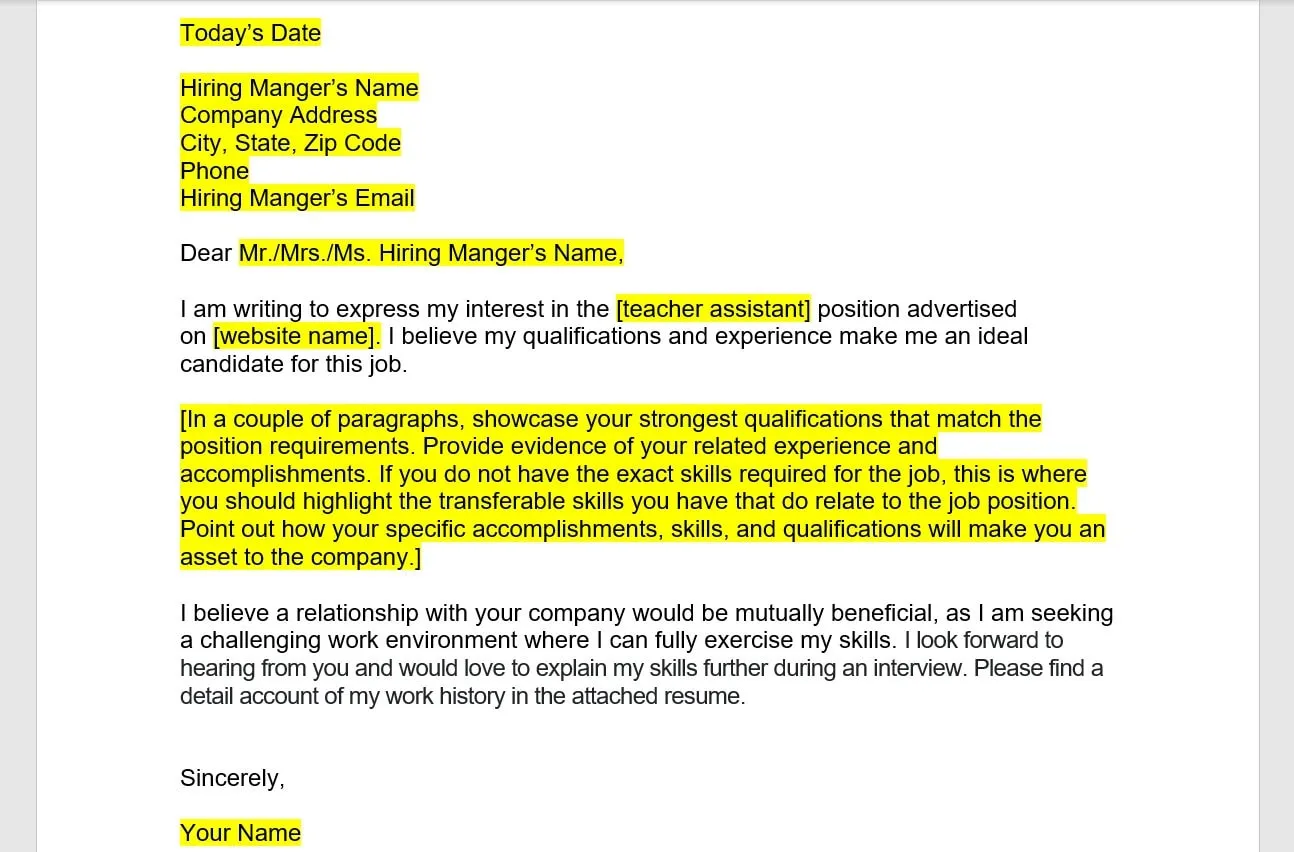
The opening paragraph is your opportunity to make a strong first impression. Start with a captivating sentence that clearly states the position you are applying for and where you saw the job posting. Then, provide a brief overview of your most relevant qualifications, like any experience in education, your passion for supporting students, or any specific skills you have. Make it clear from the beginning why you are the best candidate for the role. The first paragraph is important to capture the reader’s attention and encourage them to read the rest of the cover letter, making them want to learn more about you.
Highlighting Your Relevant Skills
Identify the skills most pertinent to the teacher’s aide position. These may include patience, communication, classroom management, organizational abilities, and the ability to work with children of different ages and learning styles. Review the job description and determine which skills the employer is looking for. Then, write about examples of when you used these skills effectively, showcasing how they will help you succeed in this role. When you mention these skills, it is important to be specific and back up your claims with examples from your experience, demonstrating that you are prepared and capable for the job.
Showcasing Your Experience
Detail your experience in educational settings. Even if you lack formal experience as a teacher’s aide, you can still include relevant experiences such as volunteering at schools, tutoring, mentoring, or working with children in any capacity. Be specific about your responsibilities in these roles and what you achieved. Use the STAR method (Situation, Task, Action, Result) to structure your examples, describing the situation, the task you undertook, the actions you took, and the results you achieved. This method helps you to clearly and concisely illustrate your skills and accomplishments, making your experience more relatable and convincing.
Emphasizing Your Passion and Enthusiasm
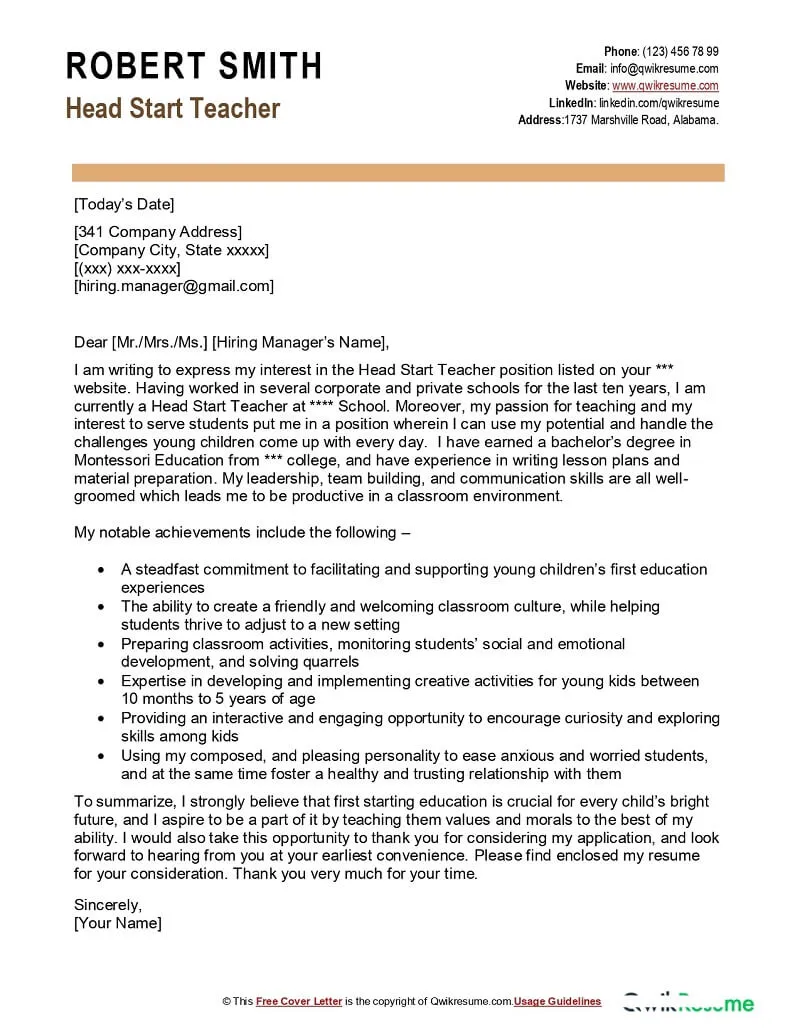
A genuine passion for education and supporting students is a significant asset for a teacher’s aide. Express your enthusiasm for the role and your commitment to creating a positive and engaging learning environment. Share your desire to help students succeed and your belief in the importance of education. Describe what motivates you to work with children and what aspects of the teacher’s aide role you find most appealing. Demonstrating this enthusiasm can make you stand out as a candidate who is not only qualified but also genuinely dedicated to the well-being and development of the students.
Mentioning Specific Achievements
Provide concrete examples of your achievements. Instead of just listing your responsibilities, quantify your impact whenever possible. For instance, if you helped improve student performance, mention the percentage increase. If you assisted in organizing classroom activities, note how it improved the learning experience. Providing specific examples demonstrates your impact and your abilities. This will make your cover letter more persuasive. Showing your achievements offers tangible evidence of your skills and abilities. The more specific you are, the more convincing your cover letter will be.
Closing Paragraph and Call to Action
In your closing paragraph, reiterate your enthusiasm for the position and summarize why you are a suitable candidate. Express your interest in an interview and state how you look forward to discussing your qualifications further. Always thank the reader for their time and consideration. Ensure you include your contact information again. This call to action encourages the hiring manager to take the next step and contact you. It also reinforces your interest and professionalism, making it more likely that your application will move forward.
Proofreading and Editing Your Cover Letter
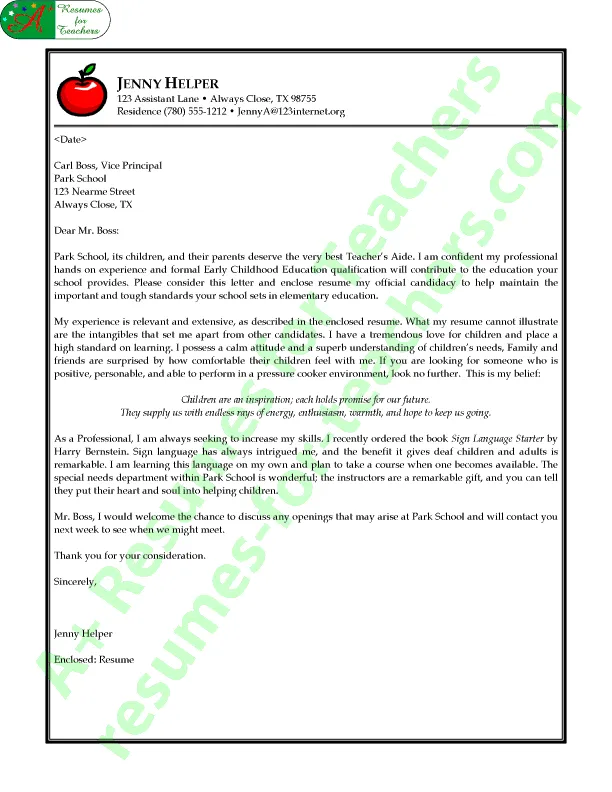
Before submitting your cover letter, thoroughly proofread and edit it for any errors in grammar, spelling, and punctuation. Errors can undermine your professionalism and distract from the quality of your application. Read your cover letter aloud to catch any awkward phrasing or repetitive sentences. Consider asking a friend or family member to review your letter for a second opinion. Double-checking your application is crucial to ensure it represents you in the best possible light. A polished and error-free cover letter demonstrates your attention to detail and your commitment to excellence.
Formatting and Presentation Tips
The formatting of your cover letter is important for readability and professionalism. Use a standard font like Times New Roman or Arial, with a font size of 11 or 12 points. Use clear headings and subheadings to break up the text. Ensure your letter is well-spaced and easy to read. Keep your letter concise, ideally within one page. Use a professional layout and formatting to present your information clearly and attractively. Consistent formatting helps make your cover letter visually appealing, showing that you take the time to present yourself in a professional manner.
Common Mistakes to Avoid
Be aware of common mistakes to avoid in your cover letter. Avoid using generic cover letters that are not tailored to the specific job. Refrain from mentioning negative aspects of previous jobs or experiences. Do not include irrelevant information or overly long paragraphs. Avoid spelling or grammatical errors. Do not use jargon or overly complex language. Always proofread and edit your cover letter. By avoiding these common mistakes, you can ensure your application is professional, concise, and compelling, making it more likely to get noticed.
Tailoring Your Cover Letter to Each Job
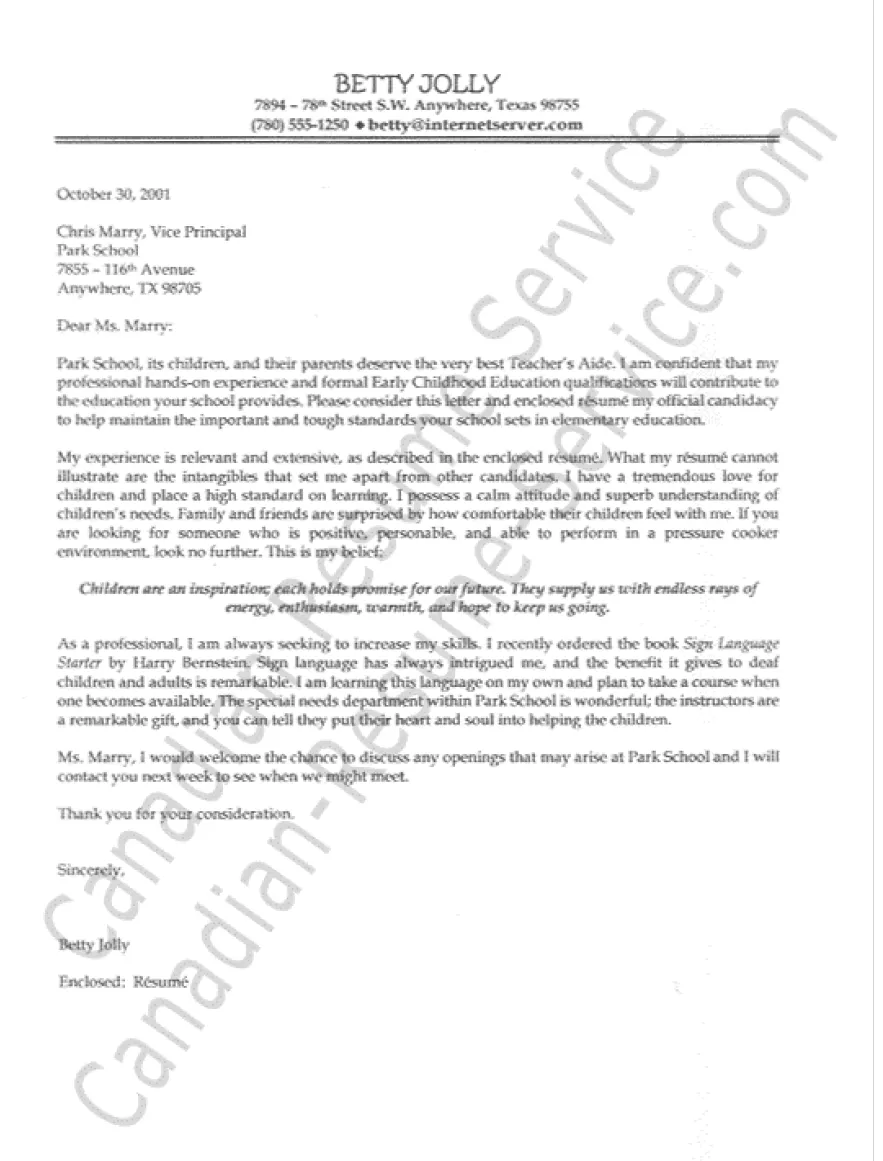
Customize your cover letter for each job you apply for. Review the job description carefully and tailor your cover letter to address the specific requirements and skills listed. Highlight the experiences and skills that are most relevant to the position. Research the school or district to understand their mission, values, and any specific needs. Mentioning these can show the employer that you are genuinely interested in the role and that you understand their needs. This attention to detail increases the likelihood of your application succeeding. Always customize your cover letter; do not use a generic letter for every application.
Using Keywords Effectively
Incorporate keywords from the job description into your cover letter. Keywords are terms and phrases used in the job posting. Make sure to use these words naturally. This can increase your chances of getting noticed by applicant tracking systems. It also shows the hiring manager that you understand the requirements of the position. However, avoid keyword stuffing, which is the excessive use of keywords that can make your cover letter sound unnatural. The key is to integrate these keywords seamlessly into your writing.
Including a Portfolio or References
Consider including a portfolio or a list of references with your application. If you have examples of your work, such as lesson plans or examples of classroom activities, include them in a portfolio. Include a statement in your cover letter that references are available upon request or attach a list of references with their contact information. This will allow the hiring manager to verify your qualifications and achievements. Provide your references contact information, including their name, job title, email address, and phone number. Make sure you have permission from your references before listing them.
Submitting Your Cover Letter and Application
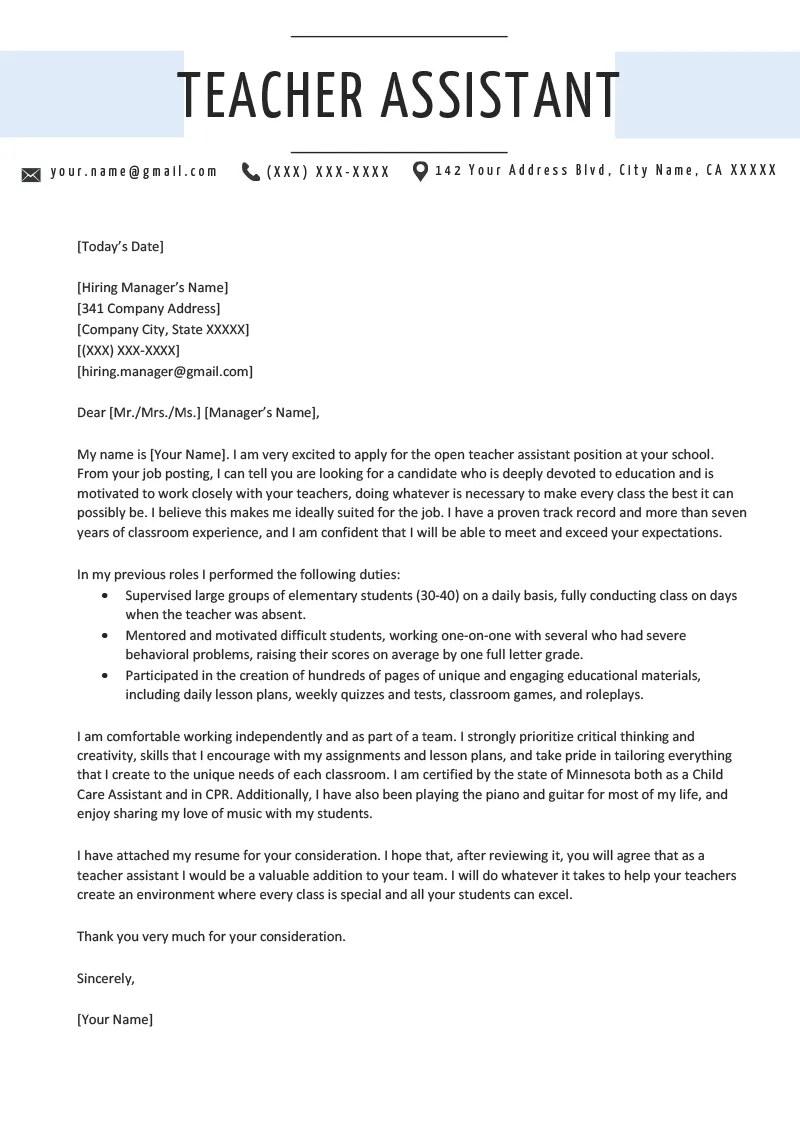
Follow the application instructions carefully. Ensure that you include all required documents, such as your cover letter, resume, and any other requested materials. Submit your application by the deadline. Use a professional format for your documents, such as PDF, to ensure they are properly displayed. Double-check that all documents are attached correctly. Sending your application on time and following instructions shows respect for the hiring process and can greatly improve your chances of getting hired.
Following Up on Your Application
After submitting your application, follow up with the hiring manager. Send a brief email or make a phone call to reiterate your interest in the position and inquire about the status of your application. Follow up within a reasonable timeframe, such as a week or two after the application deadline. Be polite and professional in your communication. Use this as another opportunity to highlight your qualifications. Following up can demonstrate your enthusiasm and initiative, potentially increasing your chances of being considered for an interview.
